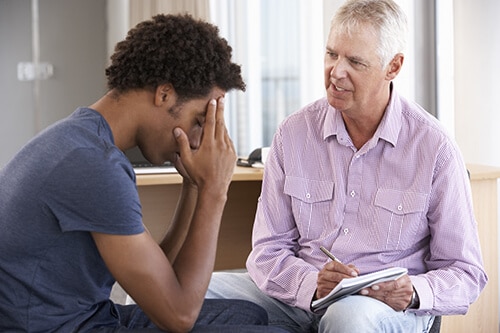Opiate Withdrawal Symptoms
Home » Addiction Treatment Programs PA » Addiction Treatment Services » Opiate Addiction Rehab »
Opiate Withdrawal Symptoms
Opiate Withdrawal Symptoms
Narcotic pain relievers have received plenty of attention lately. In fact, their abuse potential is leading to a national crisis. People who want to quit are afraid of opiate withdrawal symptoms. However, what are they, and how do you overcome dependency?

How Opiates Work
Opiates, which include morphine, codeine, and heroin, suppress the central nervous system. Moreover, the drugs block pain impulses that the body sends to the brain. They leave you with a comfortable feeling of numbness and overall relaxation. Specifically, when you take larger doses, you may experience feelings of euphoria.
People who’re dealing with PTSD and other conditions like the way the drugs turn off their feelings. It’s now easier to keep unwelcome thoughts at bay. However, there’s a price to pay for the high. It starts with painful and debilitating opiate withdrawal symptoms for people who try to quit using on their own.
Typical Opiate Withdrawal Symptoms
You may feel the first effects about six to eight hours after taking the last dose. They start slowly. For example, there is nausea and gastrointestinal issues. You experience stomach cramps. For the next couple of days, things get worse. You’re hot and cold. You sweat, have goosebumps, and feel like you’re coming down with the flu. In addition, many people experience intense cravings for the drug. They’ll do anything for another dose at that point. You’re dealing with severe bouts of depression. Not surprisingly, most people experiencing the withdrawal symptoms at home will relapse. The combination of psychological and physiological effects wears them down. However, there’s another way of quitting the drug that works much better.Medical Detoxification is Safe and Effective
At a detox facility, you check in shortly after taking your last dose. You work with caring staff members who help you settle in. Over the course of the next three to seven days, you withdraw from the drug. However, medical monitoring minimizes pain and discomfort. Pharmacological support assists with cravings control. Your body still sheds the drug. As a result, you have better odds of preventing the relapse that happens outside a medical opiate detox.Moving from Detox to Rehab
After a week, you overcome the withdrawal symptoms. You successfully end the physiological dependency. However, there’s more work to do. Rehab prevents you from going back to using when the first triggers hit. It’s best to work with a facility that offers detox and rehab on the same campus. Therefore, a seamless transition works in your favor. Therapists who know your detox history can now customize a treatment protocol. For example, available addiction treatment programs might include:- Cognitive behavioral therapy
- Dialectical behavior therapy
- Trauma therapy
- Outdoor activities
- Nutrition education